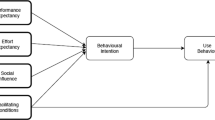Abstract
Implementing health information systems (HIS) to support the healthcare process is subject to many challenges: behavioural, technical, and organisational. Developing these technological artefacts based on good understanding of such challenges, yields a system design capable of addressing implementation issues. Based on such understanding, we set off a development process to produce a metaphoric software tool to support health care practitioners in a hospital setting. The development of software adopting such approach explicitly considers the inclusion of users concerns, a crucial determinant for the successful implementation of any IS. The software design directly implemented the look and feel of a paper-based medical form used by targeted health care practitioners. This paper illustrates empirical research done in developing and evaluating a metaphoric software tool, and highlights important aspects of such approach in addressing the implementation process.
Access this chapter
Tax calculation will be finalised at checkout
Purchases are for personal use only
Preview
Unable to display preview. Download preview PDF.
Similar content being viewed by others
References
Pope, C., Mays, N.: Qualitative Research: Reaching the parts other methods cannot reach: an introduction to qualitative methods in health and health services research. British Medical Journal 311(6996), 42–45 (1995)
Ash, J.S., Berg, M., Coiera, E.: Some Unintended Consequences of Information Technology in Health Care: The Nature of Patient Care Information System-related Errors. Journal of the American Medical Informatics Association 11(2), 104–112 (2004)
Van der Meijden, M.J., et al.: Determinants of Success of Inpatient Clinical Information Systems: A Literature Review. J. Am. Med. Inform. Assoc. 10(3), 235–243 (2003)
Southon, F.C.G., Sauer, C., Dampney, C.N.G.: Information Technology in Complex Health Services: Organizational Impediments to Successful Technology Transfer and Diffusion. J. Am. Med. Inform. Assoc. 4(2), 112–124 (1997)
Davis, G.B., et al.: Diagnosis of an information system failure: A framework and interpretive process. Information & Management 23(5), 293–318 (1992)
Gerlach, J.H., Kuo, F.-Y.: Understanding Human-Computer Interaction for Information Systems Design. MIS Quarterly 15(4), 527–549 (1991)
Ash, J.S., Bates, D.W.: Factors and Forces Affecting EHR System Adoption: Report of a 2004 ACMI Discussion. J. Am. Med. Inform. Assoc. 12(1), 8–12 (2005)
Lorenzi, N.M., Riley, R.T.: Managing Change: An Overview. J. Am. Med. Inform. Assoc. 7, 116–124 (2000)
Heeks, R., Mundy, D., Salazar, A.: Understanding Success and Failure of Health Care Information Systems. In: Armoni, A. (ed.) Healthcare Information Systems: Challenges of the New Millennium. Idea Group Publishing, London (2000)
Berg, M.: Patient Care Information Systems and Health Care Work: a Sociotechnical Approach. International Journal of Medical Informatics 55(2), 87–101 (1999)
Madsen, K.H.: A guide to Metaphorical Design. Commun. ACM 37(12), 57–62 (1994)
Blackwell, A.F.: The reification of metaphor as a design tool. ACM Trans. Comput. -Hum. Interact. 13(4), 490–530 (2006)
Noble, J., Biddle, R., Tempero, E.: Metaphor and metonymy in object-oriented design patterns. Aust. Comput. Sci. Commun. 24(1), 187–195 (2002)
MacLean, A., et al.: Reaching through analogy: a Design Rationale perspective on roles of analogy. In: Proceedings of the SIGCHI conference on Human factors in computing systems: Reaching through technolog. ACM, New Orleans (1991)
Erickson, T.D.: Working with interface metaphors, in Human-computer interaction: toward the year 2000, pp. 147–151. Morgan Kaufmann Publishers Inc., San Francisco (1995)
Kinzie, M.B., et al.: A User-centered Model for Web Site Design: Needs Assessment, User Interface Design, and Rapid Prototyping. J. Am. Med. Inform. Assoc. 9(4), 320–330 (2002)
Walz, D.B., Elam, J., Curtis, B.: Inside a software design team: knowledge acquisition, sharing, and integration. Commun. ACM 36(10), 63–77 (1993)
Kensing, F., Blomberg, J.: Participatory Design: Issues and Concerns. Computer Supported Cooperative Work (CSCW) 7(3), 167–185 (1998)
Holtzblatt, K., Beyer, H.: Making customer-centered design work for teams. Commun. ACM 36(10), 92–103 (1993)
Weinschenk, S., Jamar, P., Yeo, S.C.: GUI Design Essentials. John Wiley & Sons, Inc., Chichester (1997)
Berg, M., Toussaint, P.: The mantra of modeling and the forgotten powers of paper: a sociotechnical view on the development of process-oriented ICT in health care. International Journal of Medical Informatics 69(2-3), 223–234 (2003)
Calabretto, J.-P.: Supporting Medication-related Decision Making with Information model-based Digital Documents. In: School of Computer and Information Science. University of South Australia, Adelaide (2007)
Hevner, A.R., et al.: Design Science in Information Systems Research (1) (Research Essay) 28(1), 75(31) (2004)
March, S.T., Smith, G.F.: Design and natural science research on information technology. Decision Support Systems 15(4), 251–266 (1995)
Vaishnavi, V., Kuechler, B.: Design Research in Information Systems, January 18 (2006) (cited July 15, 2007), http://www.isworld.org/Researchdesign/drisISworld.htm
Author information
Authors and Affiliations
Editor information
Editors and Affiliations
Rights and permissions
Copyright information
© 2009 Springer-Verlag Berlin Heidelberg
About this paper
Cite this paper
Awami, S., Swatman, P.M.C., Calabretto, JP. (2009). Implementing Medication Management Software Effectively Within a Hospital Environment: Gaining Benefits from Metaphorical Design. In: Yang, J., Ginige, A., Mayr, H.C., Kutsche, RD. (eds) Information Systems: Modeling, Development, and Integration. UNISCON 2009. Lecture Notes in Business Information Processing, vol 20. Springer, Berlin, Heidelberg. https://doi.org/10.1007/978-3-642-01112-2_36
Download citation
DOI: https://doi.org/10.1007/978-3-642-01112-2_36
Publisher Name: Springer, Berlin, Heidelberg
Print ISBN: 978-3-642-01111-5
Online ISBN: 978-3-642-01112-2
eBook Packages: Computer ScienceComputer Science (R0)




